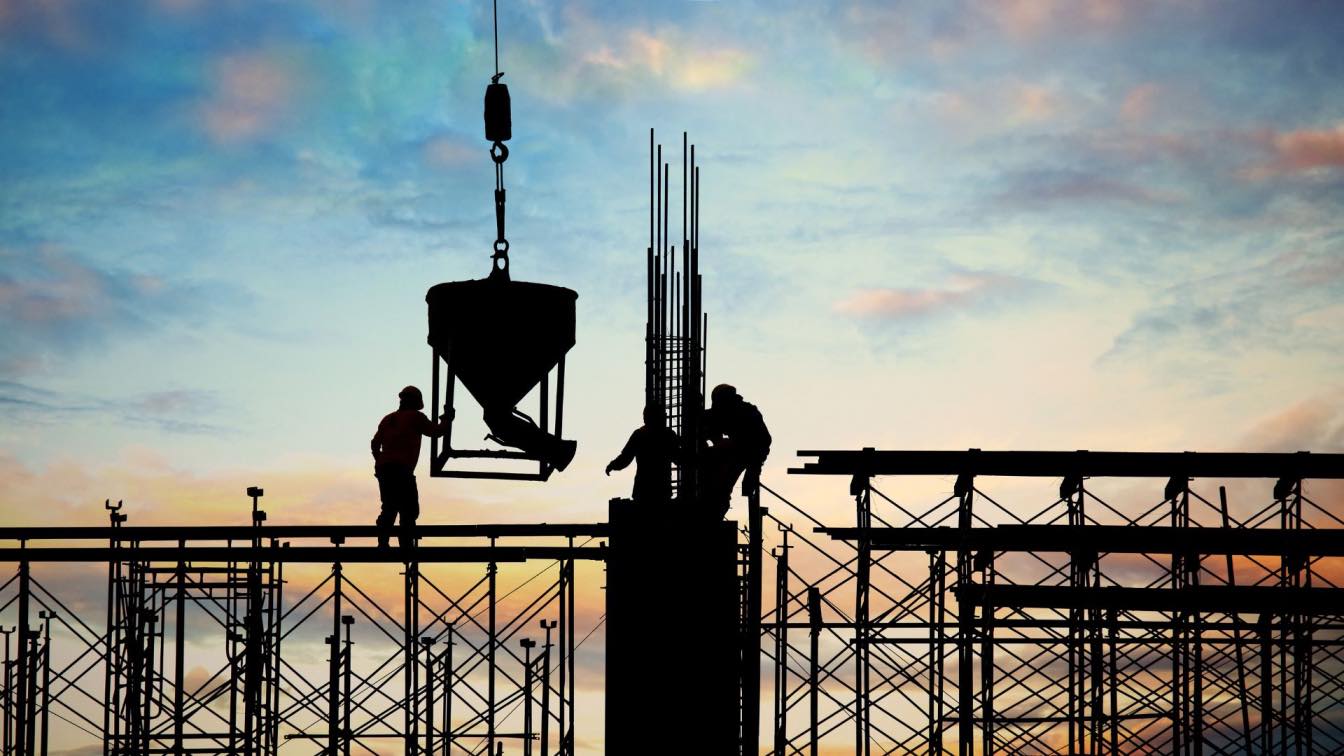Introduction
In the ever-evolving realm of architecture and engineering, individuals are frequently required to be present at construction locations, where ensuring safety takes precedence. This guide will explore the fundamental safety equipment that architects and engineers ought to possess while on-site to shield themselves from diverse hazards. Proficiency in these protective precautions is not solely vital for individual welfare but also plays an essential role in upholding a safety-conscious ethos within the field.
Understanding the Risks On-Site
1. Common Hazards in Construction Environments
Construction sites often present a multitude of potential dangers. Whether it's the threat of falling materials or the presence of hazardous machinery, it is imperative for experts to be well-equipped to handle a variety of perils. Acknowledging the potential hazards they could encounter constitutes the initial phase in guaranteeing their well-being.
2. Importance of Risk Assessments
Prior to putting on any safety equipment, it is crucial to perform a thorough evaluation of potential risks. This essential action enables architects and engineers to pinpoint specific hazards inherent to their particular project and subsequently strategize to ensure that the protective gear they wear is not just used but also customized to address the site's specific risks.
Hearing Protection
1. Earplugs vs earmuffs
Earplugs and earmuffs are indispensable safety devices, serving a critical purpose not just within bustling industrial environments, but also for professionals such as engineers and architects. Engineers, particularly those engaged in on-site activities, frequently encounter the cacophony of heavy machinery and construction-related sounds. Likewise, architects, whether on construction site visits or conducting building inspections, contend with an array of potentially injurious noise levels. In such contexts, safeguarding one's auditory well-being takes on paramount importance.
Earplugs, designed to snugly fit into the ear canal, create an effective barrier against disruptive sounds, while earmuffs, covering the entire external ear, provide a more comprehensive level of defense. Both of these tools play a pivotal role in enabling these experts to concentrate on their responsibilities without being hindered by distracting ambient noises or exposed to potential harm.
Nevertheless, it is imperative to highlight that not all ear protection products available on the market meet users' standards. Some individuals have raised concerns about specific brands, such as the 3M earplugs, asserting that they have experienced hearing impairment attributed to product deficiencies.
If you're based in California and believe you've encountered such problems, it's vital to seek legal redress. Find a specialized California 3M earplug attorney to represent you through Schmidt and Clark to ensure that your rights are defended and you receive expert guidance and representation.
2. Noise reduction ratings (NRR)
Loud machinery and equipment present significant threats to one's auditory well-being. Gaining knowledge about Noise Reduction Ratings is valuable in making informed choices when it comes to selecting appropriate hearing safeguards
3. Situations requiring hearing protection
Whether it's the noise from jackhammers or the roar of heavy machinery, numerous situations necessitate the utilization of auditory safeguards. Neglecting this precautionary measure can result in permanent harm to one's hearing.
Eye Protection
1. Safety Glasses vs. Goggles
On construction sites, ensuring the safety of one's eyes holds paramount importance. The selection between safety glasses and goggles hinges upon the specific tasks at hand. Safety glasses offer fundamental protection, whereas goggles furnish a sealed shield against particles, debris, and chemical substances.
2. Anti-Glare and Tinted Options
In surroundings characterized by intense lighting conditions, the use of anti-glare and tinted lenses can improve vision and minimize eye fatigue. Architects and engineers should carefully choose the most suitable option to align with their particular requirements.
3. Lens Materials and Coatings
Familiarizing oneself with the materials used for lenses and various coatings can prolong the durability of eye protection equipment and improve clarity. Key elements to take into account include polycarbonate lenses and anti-scratch treatments.
Hard Hats & Helmets
1. Types and Materials
Hard hats and helmets are available in a variety of types and materials, each tailored for specific purposes. Grasping these distinctions is crucial to guarantee the highest level of protection.
2. Proper Fit and Maintenance
The effectiveness of a helmet hinges on its proper fit. Routine maintenance inspections are essential to confirm that the equipment retains its peak condition.
3. Standards and Certifications
Adhering to safety regulations and certifications guarantees the dependability of the helmet. Architects and engineers should possess knowledge of these standards to make well-informed decisions.
Respiratory Protection
1. Types of Respirators and Masks
In settings where dust, fumes, or airborne pollutants are prevalent, ensuring respiratory protection is of utmost importance. A range of respirators and masks are available to address diverse requirements.
2. Filters and Cartridges
Selecting appropriate filters and cartridges is a critical step in safeguarding against particular risks. Architects and engineers should have a comprehensive grasp of the filtration capabilities of their equipment.
3. Fit Testing and Seal Checks
Ensuring a correct fit is essential to guarantee that respiratory protection equipment establishes an efficient seal. Routine fit testing and seal assessments are indispensable for maintaining safety standards.
Protective Footwear
1. Steel-Toed vs. Composite-Toed Boots
The selection of suitable footwear is contingent upon the specific demands of the task at hand. Architects and engineers should take into account factors such as weight, longevity, and electrical resistance while making choices regarding their boots.
2. Slip-Resistant and Puncture-Resistant Soles
Construction environments frequently entail risks of slipping and puncturing. Employing the correct sole can avert accidents and injuries.
3. Proper Fit and Maintenance
As with any protective equipment, ensuring the appropriate fit and regular upkeep of footwear is essential for sustaining long-term safety.
High-Visibility Clothing
1. Reflective Vests and Clothing Types
Enhancing safety on-site is achieved through the use of high-visibility attire, which increases the visibility of professionals. While reflective vests are a popular choice, there are also other clothing options that provide visibility advantages.
2. Levels of Visibility and Standards
Comprehending different levels of visibility and adhering to industry regulations is paramount when choosing and donning high-visibility attire.
3. When and Why to Wear Them
Being aware of the appropriate times to utilize high-visibility clothing can serve as a preventive measure against accidents, especially in scenarios with low-light conditions or in close proximity to heavy machinery.
Hand Protection
1. Types of Gloves (Cut-Resistant, Chemical-Resistant, Insulated)
Hands are exposed to a range of risks in construction settings. Architects and engineers must carefully select gloves tailored to particular tasks, whether it be cut-resistant, chemical-resistant, or insulated gloves.
2. Proper Fit and Care
Making sure your gloves fit correctly and are in good working order is essential for protecting your hands.
3. Selecting the Right Glove for Specific Tasks
Different jobs necessitate different gloves. Knowing the hazards specific to each job is essential for choosing the right gloves.
Fall Protection Equipment
1. Harnesses and Lanyards
Professionals operating at elevated heights require essential fall protection gear. Harnesses and lanyards constitute integral elements of this safety system.
2. Anchor Points and Lifelines
Understanding the appropriate anchoring points for safety equipment and acquiring proficiency in the proper usage of lifelines is imperative to avert fall incidents.
3. Fall Arrest Systems
Comprehending fall arrest systems and their correct application can be the decisive factor between survival and fatality in the event of a fall.
Skin Protection
1. Sunscreens and UV Protective Clothing
Protection from the sun's harmful UV rays is often overlooked but is critical for long-term skin health.
2. Barrier Creams for Chemical Exposure
Barrier creams provide an additional layer of protection against chemicals and irritants commonly found on construction sites.
3. Best Practices for Skin Care On-Site
Architects and engineers should follow best practices for skin care to prevent sunburn, chemical burns, and other skin-related issues.
Emergency Safety Gear
1. Fire-Resistant Clothing
Fire-resistant clothing is essential when working with flammable materials or in environments prone to fires.
2. Life Jackets for Sites Near Water
Water bodies near construction sites necessitate the presence of life jackets to prevent drowning accidents.
3. Emergency Escape Masks and Equipment
Having access to emergency escape masks and equipment can be life-saving in hazardous situations.
Maintenance and Storage of Protective Gear
1. Routine Checks and Replacement Schedules
Regular checks and adherence to replacement schedules ensure that protective gear remains effective.
2. Cleaning and Storing Gear Properly
Proper cleaning and storage of gear extend its lifespan and maintain its integrity.
3. Life Cycle of Common Protective Equipment
Gaining insight into the expected longevity of protective gear aids in scheduling timely replacements.
Importance of Training and Awareness
1. Training Programs and Workshops
Participating in training programs and workshops ensures that architects and engineers are well-versed in safety practices.
2. On-Site Demonstrations and Drills
Conducting on-site demonstrations and safety drills reinforces adherence to safety protocols and ensures a state of readiness.
3. Ensuring Compliance and Consistency
Sustaining a safety-oriented culture necessitates continual adherence to safety measures and unwavering vigilance.
Emerging Technologies in Protective Gear
1. Wearable Tech for Health and Safety Monitoring
The progression of technology has introduced wearable devices capable of monitoring health and safety metrics, thereby improving real-time safety management.
2. Smart Helmets and Goggles
Smart helmets and goggles provide functionalities such as augmented reality displays, enhancing on-site situational awareness.
3. Innovations in Material Science
Advancements in materials science persistently yield innovative materials, elevating the durability and efficacy of protective gear.
Conclusion
Emphasizing a Culture of Safety
Promoting a culture of safety is not just a responsibility but a moral imperative within the architecture and engineering industry.
The Responsibility of Architects and Engineers in Setting Safety Standards
Architects and engineers play a pivotal role in setting safety standards and ensuring their implementation.
Continuous Improvement in Protective Gear Practices
It's crucial to remain up-to-date with the latest developments in protective equipment to safeguard the health and safety of professionals working on construction sites in an industry that continually undergoes rapid changes. Architects and engineers can enhance workplace safety and security for everyone by recognizing and giving importance to the fundamental aspects of protective gear.





